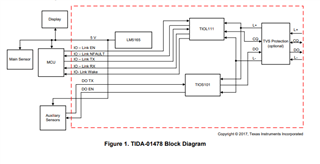Other Parts Discussed in Thread: TIOS101
Hello,
My main application is to integrate the magnetic reed sensor switch to activate and deactivate the output which are pilot valves.
I had planned to connect the sensors directly to the microcontroller as DI and the also the pilot valves as DO and use the USART from microcontroller to communicate between the IO-Link master via the TIOL1115 IO-Link PHY.
Is my approach the correct way? Or should I rather integrate the sensors with TIOS101 as it is a digital sensor output driver and also use the TIOL1115 as the IO-Link PHY.



